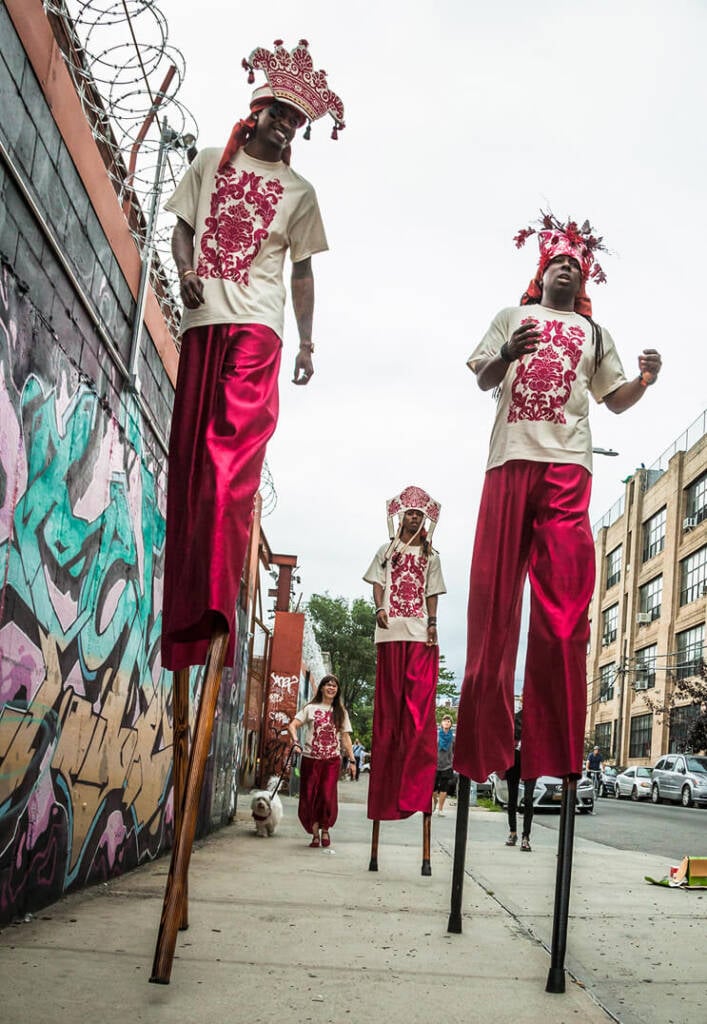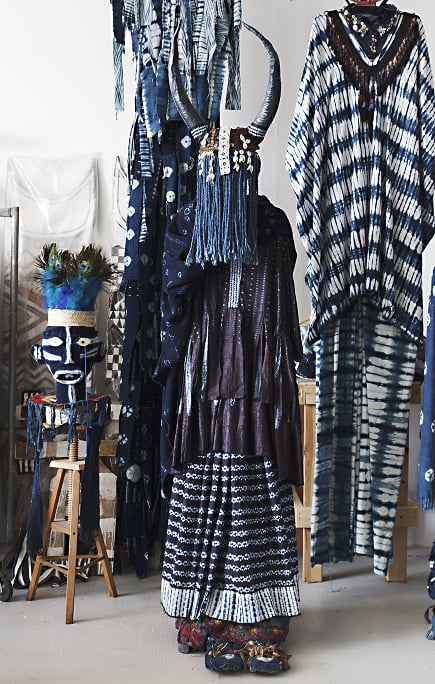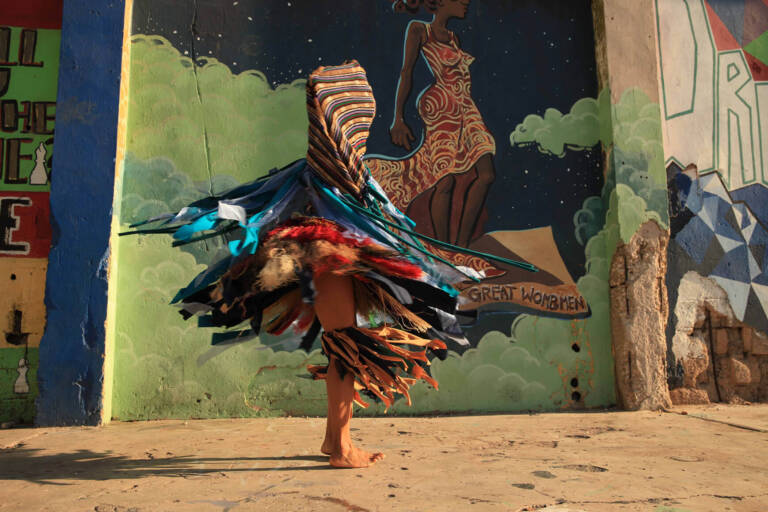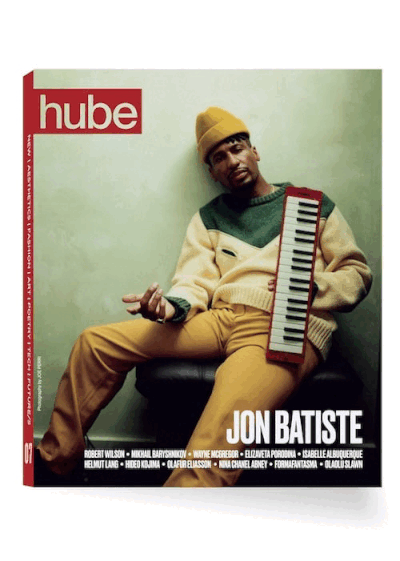
Intervention: Raphael Red, walk-through Bushwick, 2016
The Brooklyn Jumbies
Photography by FRANK VERONSKY
Courtesy of ISABELLA STEWART GARDNER MUSEUM

Intervention: Indigo, 2018
Studio installation view
Photography by DORA SOMOS
A multi-award-winning transdisciplinary artist, Laura Anderson Barbata has produced art projects and performances focusing on the involvement of collaborative participation, while also addressing topics such as social justice, sustainability, and the future. Living between New York and her hometown, Mexico City, Laura’s work continues to confront the relationship between people and the spaces they occupy through ongoing interventions, often performed spontaneously with collaborators including scientists, activists, musicians, street dancers, artisans, as well as the audiences lucky enough to witness them.
hube: Artists have always had a unique relationship with time, to the past, present, and future. Which of these divisions of time are important in your work? And in what priority would you place them?
Laura Anderson Barbata: First, I’m not sure artists have a unique relationship with time. I think everyone does because we live within it. And whatever our perceptions of the passing of time may be, they are heavily influenced by culture, the present moment, history, and many other factors. So when I think about time, I’m thinking more about the past in broader terms. I think the past is important because it offers us an opportunity to review how we, as a society, have evolved and changed in terms of our relationship to nature, to life, to human rights, and understand the way things were seen in the past. We can analyze the past now, in the present, to see how we can modify it going forward, and this is what makes the present crucial. The present is where we can collectively construct the future.
h: Art is an external expression of imagination. Your statements are usually based on active interaction with people’s daily lives. They reflect the idea of a spontaneous meeting between a viewer and the artwork. Why is this important in your work?
LB: I am very interested in the spontaneous encounter with the unexpected because I believe that much of our lives is spent economizing everything. Economizing time for example, because we are doing something that requires little attention but needs to get done: going to work or school, showering, making coffee… we often disconnect from what we are doing in the present and “tune out”. This has happened to me many times before—and then ask myself how did I get here? We often can’t remember the things we saw or looked at because we were so much inside our heads. These interventions, which I have presented in public spaces, create moments of reflection that interrupt a routine. I also began to present these interventions in areas that were highly populated by artists and galleries, and where art conversations were taking place. Later, because of gentrification, artists were displaced and the art conversations became quieter and started taking place elsewhere. I wanted to reintroduce that experience to the new residents of these areas, and also to the older residents who had not been displaced–those who were in a position of strength through the protection of artist loft laws or ownership of properties.
h: For thousands of years, rituals have been a way for humans to interact with higher powers such as nature, spirits, or gods. When you use the symbolic language of such rituals in your work, do you feel you are returning to the aesthetic origins of creativity?
LB: I think that area of categorization of the work can be in the hands of other fields. I have great respect for rituals, and for this reason I don’t feel I am able to insert myself there. There is, for some, a feeling of ritual within the work. So I would say that it can offer the experience of something ceremonial. If critics or writers believe my work brings rituals back into public space through contemporary art, then I am honored by that observation and feel that it is my responsibility to create meaning and a place for these experiences.
h: During the 20th century, art acquired an extensive audience and became an important part of social relations. Today, artists strive to create works that can be readily understood by many, not only by specialists and connoisseurs. What expectations do you have of your work’s dialogue with its audience?
LB: I am interested in people encountering my work unexpectedly, which often can bring up emotional responses. I am also interested in the creation of projects that facilitate the construction of relationships between participants—within communities of makers, thinkers, and practitioners of different traditions. When we are creating and building shared projects, those relationships have long-term positive effects for many of the participants. Those relationships that we cannot see manifest the richness of human interactions, of human exchange, of minds and ideas coming together. At times, future projects have developed between them, more interest has been piqued, networking has happened—these are things that spectators cannot see when such interventions are unfolding. As I mentioned before, it’s important for the viewer to have the opportunity to go as deep into its meaning as they wish to explore and experience, and to make a choice whether they want to make connections or not. They can remain focused on one or all of the layers, or just experience it as something interesting to witness. I think it’s up to each person. The fact that a lot of people will encounter it by chance is something I like about the entire process.

